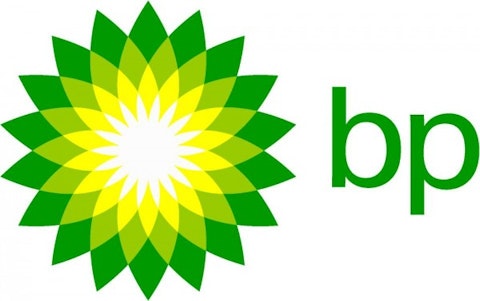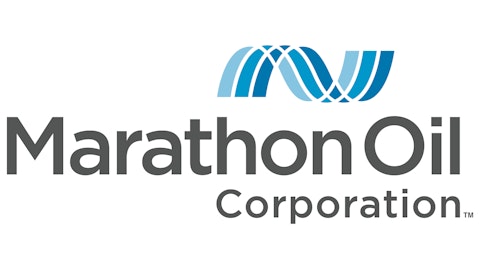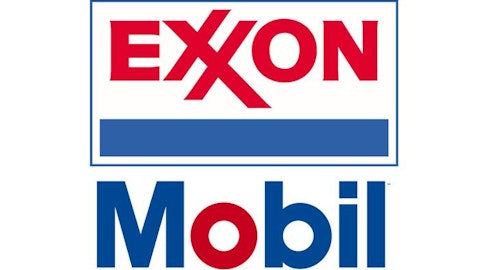BP plc (ADR) (NYSE:BP)has certainly seen better days and has beaten up quite a bit due to its oil spill fiasco in the Gulf of Mexico. While I think BP plc (ADR) (NYSE:BP) offers great value as of now, let’s acknowledge the elephant in the room first– the uncertainties involving litigation risk makes buying shares risky.
If it is found that BP acted with gross negligence, then the company may find itself paying billions of dollars more in damages. Gross negligence could cost the company up to $17 billion, in fact, not including unspecified punitive damages by claimants who didn’t get their slice of the first $8.5 billion settlement pie BP paid out last year.
So, considering this huge risk, is an investment in BP plc (ADR) (NYSE:BP) worth it?
A story of improving fundamentals…
One positive the oil giant does have going for it is its balance sheet:

BP has raised an enormous amount of cash and strengthened its financial condition– which should enable the company to take quite a beating. If it avoids significant damages and therefore isn’t subject to deal out billions and billions of dollars in lawsuit payments, then so much the better for the company’s financial strength.
The company has also managed to increase revenue, but earnings are still a little rocky and haven’t quite stabilized yet:
Once again, after the lawsuit is settled (for better or for worse), the company should be able to get its earnings in order with more stable margins and less uncertainty looming. Not only that, but BP plc (ADR) (NYSE:BP) has been increasing its dividend ever since the distribution was reinstated it in 2011, and shares currently yield over 5%. In other words, the company is paying shareholders to wait, and an investor could always use BP as an income generator, eliminating some of the risk by taking the dividends and investing them somewhere safer.
Valuations
| P/E | Forward P/E | Price/book | Market cap (billions) | |
|---|---|---|---|---|
| BP | 5.87 | 7.18 | 1.02 | $ 133.18 |
| XOM | 9.10 | 10.86 | 2.37 | $ 397.86 |
| CVX | 8.99 | 9.51 | 1.63 | $ 230.60 |
Data provided by Yahoo! Finance 06/21/2013
BP is much cheaper than its peers in every respect. The company’s 5% yield also easily trumps that of Chevron Corporation (NYSE:CVX)’s yield of around 3.3% and Exxon Mobil Corporation (NYSE:XOM)’s yield of around 2.8%. Risk should be factored in as well, but at a superficial glance BP is in the bargain bin. The uncertainty of litigation and a tarnished and even hated image will most likely keep it there as well, so why even bother? What are the catalysts that may shoot its share price upward?
While litigation risk is likely the reason BP plc (ADR) (NYSE:BP) has been trading sideways, the elimination of this risk may also be the share price’s savior. Once investors know the specific damage that will be done, then they can determine with more accuracy the future outlook for the company. While U.S. courts are unpredictable, it would be quite shocking if BP plc (ADR) (NYSE:BP) was hit so hard with damages that it would be completely destroyed. BP’s share price is also critical to the United Kingdom’s pension system.
Darkest before the dawn– in Alaska?
BP, along with Exxon Mobil Corporation (NYSE:XOM), ConocoPhillips (NYSE:COP), and TransCanada Corporation (USA) (NYSE:TRP), recently announced plans for summer field work in connection with a massive proposed liquefied natural gas (LNG) project. The project could end up totaling up to $100 billion by the end of the year. After an oil tax cut was passed in April, Alaska’s lucrative North Slope is being revived by the above oil companies.
BP, ConocoPhillips (NYSE:COP) and Exxon Mobil Corporation (NYSE:XOM) scored a big win with the tax reform, and they plan to continue to invest big money in Alaska and also to further develop the Prudhoe Bay field.
ConocoPhillips (NYSE:COP) decided to add a new rig to its Kuparuk field on the North Slope almost instantly after the tax cut was announced, but as of recently the company has also run into some problems involving fines and other complications. Still, Alaska is expected to provide a boosting of profits in the hundreds of millions of dollars for ConocoPhillips. This will be largely due to the new oil-friendly tax structure. It will also add to the company’s strong LNG portfolio, which recently scored another huge addition with the recent approval of the Freeport LNG terminal that is 50% owned by ConocoPhillips. The terminal is one of only two export terminals in the U.S.
ExxonMobil has also been hard at work in Alaska. The world’s largest oil company has been building a 22-mile pipeline, designed to carry LNG condensates from the company’s Point Thomson wells to the oil fields of Badami. The liquid fuel would then end up being sent to a pipeline spur that carries oil to the Trans-Alaska Pipeline System. ExxonMobil expects to be producing 10,000 barrels of condensates per day at the Point Thomson site by 2016.
BP plc (ADR) (NYSE:BP), ConocoPhillips, and ExxonMobil in conjunction have also, according to a press release: “..reached an important milestone in selecting a project concept that includes an 800-mile, 42-inch pipeline, up to eight compression stations, at least five take-off points for in-state gas delivery, a gas treatment plant located on the North Slope and a liquefaction plant in the south-central region.”
All three oil majors are investing big in Alaska and are looking to profit big in Alaska– especially if an LNG export terminal is approved in the state. This will also allow the three partners to export gas directly to customers in Europe and East Asia without the “choke points” that are found with the lower U.S. terminals that must go through areas such as the Panama Canal.
This will be a huge money-maker for the oil trio in the future if they are allowed to export, and its very realistic to expect that they will be allowed to export in the future as more terminals are approved.
The bottom line
BP plc (ADR) (NYSE:BP) is a risky buy, but also has the possibility to be a very rewarding one as well. The company’s major issue is its litigation risk, but with its importance in the British pension system its unlikely a judge will devastate the company’s pocketbooks. Even in a worse case scenario BP has a gigantic cash horde as well.
Alaska also provides relatively untapped resources that will help the company significantly boost revenue and earnings alike. An approved export terminal in the state is a real possibility in the near future as well, and would be a huge catalyst for earnings.
BP makes for a good turnaround play and its high-yielding dividend will also pay you to wait. An investor can also take BP’s generous dividend payments and put them into a safer company to offset some of the risk as well. The BP litigation is getting messy, with the latest news centering around lawyer misconduct, which is leading to more uncertainty. Once the trials are settled and uncertainty is gone, however, BP shares could very well pop if the settlements aren’t too harsh. If not, the company is likely strong enough financially to withstand the abuse. Therefore, I think BP is definitely worth the risk and will prove to be a great long-term investment in the end.
The appeal of massive capital appreciation mixed with a heavy-hitting dividend payment on the way there is just too much to pass up.
The article Is This Fallen Oil Giant Worth the Risk? originally appeared on Fool.com and is written by Joseph Harry.
Joseph Harry owns shares of ExxonMobil, BP p.l.c. (ADR), and ConocoPhillips. The Motley Fool has no position in any of the stocks mentioned. Joseph is a member of The Motley Fool Blog Network — entries represent the personal opinion of the blogger and are not formally edited.
Copyright © 1995 – 2013 The Motley Fool, LLC. All rights reserved. The Motley Fool has a disclosure policy.






